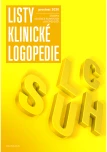HEARING EXAMINATION WITH METHODS OF EVOKED POTENTIALS AND ITS LIMITATIONS IN THE YOUNGEST CHILDREN
Authors:
doc. MUDr. Lejska Mojmír, CSc.; Mba; Brno Přednosta Audio Fon Centr Emeritní
Authors‘ workplace:
AUDIO-FON centr s. r. o., Obilní trh 4, 602 00 Brno
Published in:
Listy klinické logopedie 2020; 4(2): 30-36
Category:
Main topic
Overview
Examination of the hearing of the youngest children is completely different from the examination of older children and adults. A toddler does not cooperate, has no auditory experience and cannot communicate. It is therefore necessary to use methods other than those based on collaboration between the examiner and the examined. The method of evoked potentials (BERA) is used, which is currently the best method that phoniatricians have and are able to use in this area.
The thesis discusses in detail for which children it is necessary to repeatedly examine hearing with regard to possible hearing impairment. The sooner the hearing impairment is detected and correctly compensated for, including intensive surdopaedic care, the fewer will be the lasting effects on the subsequent life of a child affected in this way.
It would seem that measuring the evoked potential as a completely objective method of investigation is flawless. This is not the case. The second part of the thesis describes the limitations of this examination, with regard to technical and pathophysiological conditions, and thus emphasises a rational outlook on the whole issue.
Keywords:
hearing impairment – youngest children – evoked potentials
Sources
- DRŠATA, J., HAVLÍK, R., 2015. Foniatrie – sluch. Havlíčkův Brod: Tobiáš. ISBN 978-80-7311-159-5.
- CHROBOK, V a kol., 2019. Screening sluchu novorozenců. Příručka pro praxi. Praha: Česká společnost otorinolaryngologie a chirurgie hlavy a krku.
- CHROBOK, V a kol., 2019: Screening sluchu dětí ve věku 5 let. Příručka pro praxi. Praha: Česká společnost otorinolaryngologie a chirurgie hlavy a krku.
- LEJSKA, M., KABELKA, Z., HAVLÍK, R., JUROVČÍK, M., 2002. Diagnostika a léčba těžce sluchově postižených dětí. Otorinolaryng. A Foniatr. 51(2), s. 100-108.
- Metodický pokyn k provádění screeningu sluchu u novorozenců, 2012. Věstník Ministerstva zdravotnictví ČR, č. 7/2012. Praha: Ministerstvo zdravotnictví.
- Metodický pokyn k provádění screeningu sluchu u dětí ve věku 5 let, 2018 Věstník Ministerstva zdravotnictví ČR, č. 11/2018. Praha: Ministerstvo zdravotnictví.
- NOVÁK, A., 1997. Nové přístupy k diagnostice, prevenci, depistáži sluchových vad u dětí. Otorinolaryng. A Foniatr. /46 (1), s. 19-25.
- NOVÁK, A., 2003: Audiologie. Praha: Unitisk.
- YOSHINAGA-ITANO, CH, 1998. Language of Early - and Later-identified Children With Hearing Loss. Pediatrics. 102, s. 1161-1171.
- Zpracováno na základě přednášek:
- LEJSKA, M., 2016. Vyšetření sluchu u nejmenších dětí. Postgraduální kurz česko-slovenské pedaudiologické společnosti. 3.–4. 11. 2016, Starý Smokovec, Slovenská republika.
- LEJSKA, M., WEBEROVÁ, P., BÁRTKOVÁ, E., HAVLÍK, R., 2016. Možnosti vyšetření sluchu nejmenších dětí pomocí ABR a limity BERA. Postgraduální kurz česko-slovenské pedaudiologické společnosti. 3.–4. 11. 2016, Starý Smokovec, Slovenská republika.
- VACUŠKA, M., 2006. Porodnost v porodnici FN Brno v letech 2003. Celostátní kongres audiologických sester. Brno, 2006.
Labels
Clinical speech therapy General practitioner for children and adolescentsArticle was published in
Clinical speech therapy (Listy klinické logopedie)

2020 Issue 2
- Hope Awakens with Early Diagnosis of Parkinson's Disease Based on Skin Odor
- What Effect Can Be Expected from Limosilactobacillus reuteri in Mucositis and Peri-Implantitis?
- Deep stimulation of the globus pallidus improved clinical symptoms in a patient with refractory parkinsonism and genetic mutation
- The Importance of Limosilactobacillus reuteri in Administration to Diabetics with Gingivitis
Most read in this issue
- CASE STUDY OF BOY WITH SUBMUCOSAL CLEFT PALATE, DEVELOPMENTAL DYSPHASIA AND EATING DISORDER
- PHONEME AWARENESS, READING AND EARLY INTERVENTION IN CHILDREN WITH HEARING IMPAIRMENTS
- DIAGNOSTICS OF NARRATIVE ABILITIES AND CZECH ADAPTATION OF THE MAIN TOOL
- HEARING EXAMINATION WITH METHODS OF EVOKED POTENTIALS AND ITS LIMITATIONS IN THE YOUNGEST CHILDREN
